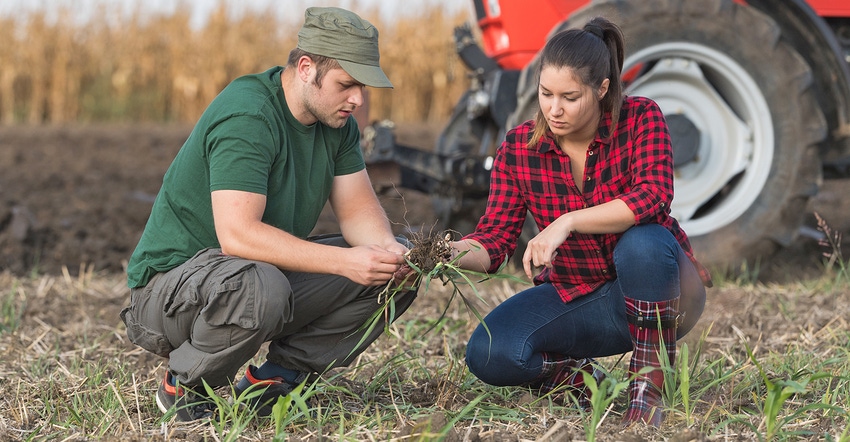April 14, 2017

By Duane Dailey
A changing rural economy challenges some farms more than others. In his farm bill testimony before the U.S. House of Representatives, Scott Brown raised a concern. The University of Missouri economist noted low income and high costs affect young farmers the most.
Debt-to-asset ratios drew his attention. For all in Missouri, debt rose only 1.8% from 2012 to 2015. But a group of young farmers 35 to 44 years old saw their ratio almost double — from 14.5% to 28.8%.
There is good news in the debt-to-asset story. However, it’s not as bright for those starting farming.
Some background: Debt to assets wiped out many farmers in the 1980s. Older farmers recall the farm crisis in coffee-shop visits. There’s no crisis like that foreseen in the recently released MU FAPRI baseline. The Food and Agriculture Policy Research Institute took its report to Congress.
Debts creeping upward
FAPRI says the debt-asset rate fell by about half from 1985 to 2012. Assets rose faster than debt. New debts are creeping up. Overall, debts to assets grew from 12% in 2012 to 14% in 2017.
Dropping land values lowered assets as farm costs crept up.
Young farmers generally are in the mode of adding land to start farming. They are affected the most.
Overall, for the young, the change in net farm income has direct impact. There’s nothing like the income boom years around 2013 in the forecast. Severe drought in 2012 cut crops and reduced livestock numbers. That short supply led to record prices across the farm sector.
Brown says that short supply and high demand won't likely come again soon.
Weather can change all
The FAPRI 10-year projection assumes normal weather through the decade. Weather remains a wild card for all.
Back to debts and assets: That ratio is seen at 16% by the end of the decade, 2026.
Here’s another wild one, interest rates. They are projected to rise. That’ll make servicing debt difficult for some producers.
Again, coffee-shop talkers recall that interest rates shot up to 20% in the early 1980s. That forced many out.
It’s that collective memory that kept most farmers from borrowing too much to buy assets. Extreme leveraging created crises for many. The 1980s burnt caution into older minds.
Most young farmers in the high-ratio group weren’t born back then.
Outlook nothing like 1980s
While the net farm incomes projected ahead are nothing like the records of 2012 to 2014, they reflect a return to the new normal. There is a steady income increase, but not sharply higher.
While net cash income shows strength, net income lowers. It’s the cost of doing business that keeps rising. Expenses plus inflation work against economic gains. That lowers net income.
Brown, in talks to farmers, says to watch costs — including family living. Family expenses grew in the years of record prices.
He adds that just cutting costs isn’t the answer. With many new technologies available, wise managers invest in ideas that boost output.
For example, cattle genetics, including use of DNA tests, increase beef production. Adding pounds of beef per acre cuts the amount of land needed to grow more than in the past.
Young farmers may have an open mind to using new technology. It will take managers who see new opportunities.
In a tight economy, past generations’ old methods might not keep pace.
Dailey is a retired MU Extension professor. He writes from his home in Columbia.
You May Also Like




